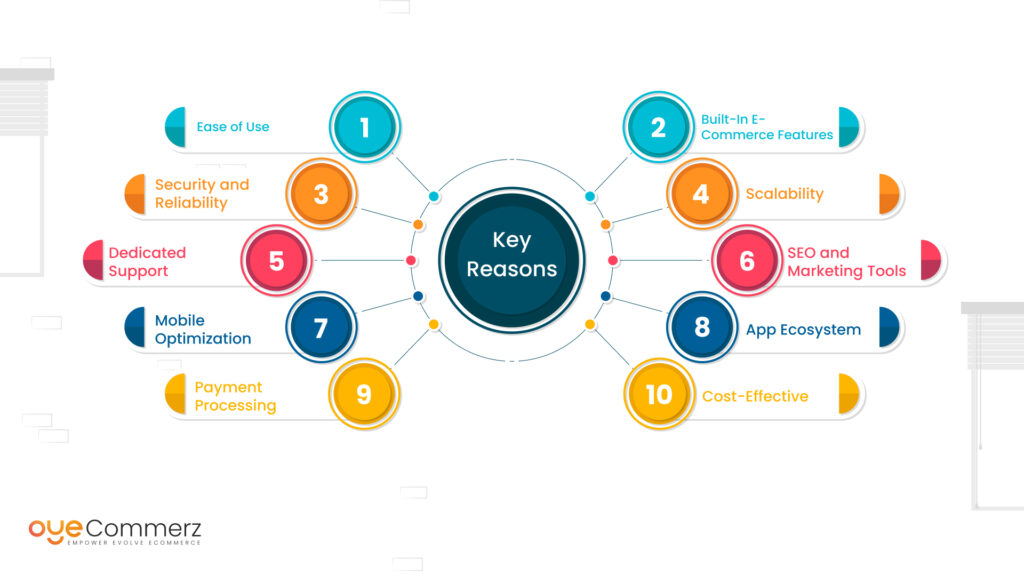Transitioning from WP to Shopify marks an exciting step in optimizing your online store operations. As companies grow, selecting a platform that supports growth potential, user experience, and flexibility is essential. Shopify has emerged as a preferred choice for online merchants, providing unmatched adaptability, security, and user-friendliness. In this guide, we will delve into why this migration is a game-changer, highlight the benefits, and share actionable steps to facilitate a seamless move.
1. Why Switch from WordPress to Shopify?
The combination of WordPress and WooCommerce, continues to support countless online stores. Nevertheless, as businesses expand, issues like reliance on plugins, security vulnerabilities, and technical complexities can hinder progress. Shopify, designed explicitly for digital retail, addresses these issues with an comprehensive, user-friendly solution. Statistics supports this shift—Shopify hosts over 4.4 million websites worldwide, with a documented 10% increase in sales performance for numerous merchants after migration.
2. Shopify's Advantages for Thriving Online Stores
Shopify’s robust ecosystem caters for expanding businesses. Its standout features are:
- Effortless Design Flexibility: Shopify provides over 80 expertly crafted themes.
- Built-in Features: Capabilities such as Shopify Payments and integrated SEO streamline operations.
- International Expansion: Currency versatility and regional customization enable businesses to expand internationally.
Additionally, Shopify boasts an availability percentage of 99.98%, guaranteeing your store is always operational.
3. Getting Ready for Your WordPress-to-Shopify Transition
Prior to starting the migration process, assess your current store. Review inventory details, customer details, and SEO performance. Resources such as Shopify’s Migration Kit or external tools can simplify this process. Develop a comprehensive plan, making sure all assets—item details, media files, and blog content—are optimized for transfer.
4. The Importance of Accurate Data Migration
Transferring your data is a cornerstone of a smooth platform switch. When migrating from WP to Shopify, prioritize:
- Inventory Details: SKU, descriptions, and groupings.
- Customer Data: Emails, purchase records, and preferences.
- Search Engine Considerations: Retain meta tags, URLs, and redirects to avoid SEO losses.
Leverage tools such as LitExtension to facilitate seamless migration while reducing mistakes.
5. Tailoring Your Shopify Store to Fit Your Brand
Post-migration, customizing your Shopify store ensures it aligns with your brand. Utilize Shopify’s drag-and-drop editor to create layouts with ease. Shopify's themes are optimized for all devices, providing a smooth UX across devices—a key point, given 74% of e-commerce traffic is generated by mobile users.
6. Maintaining SEO During Migration
SEO is vital for preserving your online presence during migration. Shopify excels in SEO with clean URL structures, built-in optimization tools, and smooth content management. Make sure you:
- Set up URL forwarding for existing links. Shopify SEO setup
- Enhance updated content with targeted phrases.
- Use Shopify's apps Plug in SEO to monitor performance post-migration.
7. Essential Tests After Migrating to Shopify
After finishing the transfer, run detailed checks.
Review: - Website speed (Shopify delivers faster speeds in contrast with WordPress).
- Functionality of payment gateways and checkout processes.
- Mobile responsiveness.
Quality assurance guarantees your store delivers a seamless shopping journey from day one.
8. Case Study of a Successful Migration
One such migration success story is Gymshark, a sportswear company that transitioned to Shopify. Post-migration, the company saw a 60% increase in mobile sales and significantly lowered site downtime. This highlights the capabilities of Shopify in enhancing online business success.
9. Overcoming Common Migration Issues
Smooth transition to ShopifyMigration is not without obstacles, such as information accuracy and adjusting tailored features. However, Shopify’s extensive assistance and external professionals simplify the process. Collaborating with experienced Shopify developers ensures a trouble-free transition.
10. Making the Switch: The First Step Toward Success
Migrating from WP to Shopify marks a forward-thinking decision to online retail. By addressing scalability, simplifying management, and enhancing the customer experience, Shopify empowers businesses to succeed in competitive markets.
Final Thoughts
Switching from WordPress to Shopify offers a smart solution that can greatly enhance your e-commerce success. With a robust migration plan, the appropriate resources, and expert support, you can unlock new success milestones.
Excited to start the journey? Let’s discuss how our Shopify migration services can transform your e-commerce platform. Contact us now, or consider: Is it time to seize Shopify’s advantages for your store?
